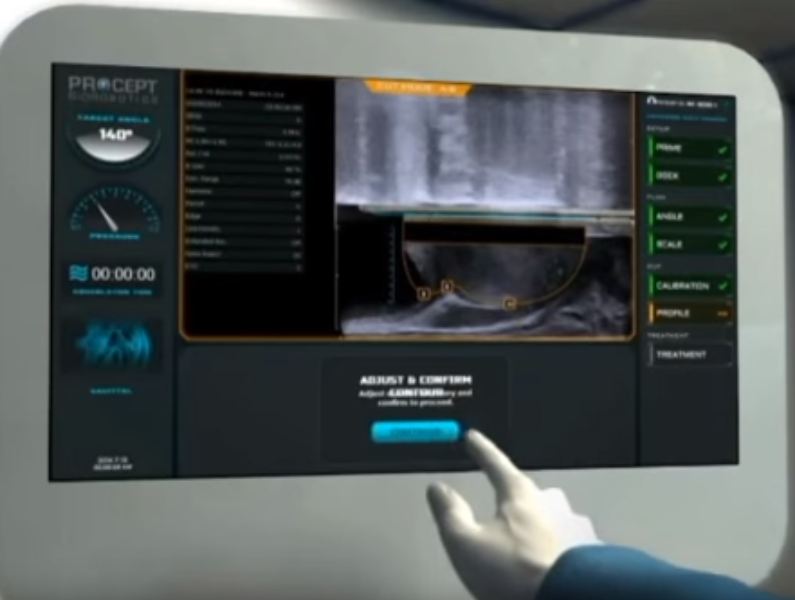Video: Aquablation – image-guided robot-assisted waterjet ablation of the prostate
Aquablation – image-guided robot-assisted waterjet ablation of the prostate: initial clinical experiences
Objective
To assess the safety and feasibility of aquablation in a first-in-man study. Aquablation is a novel minimally invasive water ablation therapy combining image guidance and robotics (aquabeam®) for the targeted and heat-free removal of prostatic tissue in men with lower urinary tract symptoms (LUTS) secondary to benign prostatic hyperplasia (BPH).
Patients and Methods
A prospective, non-randomised, single-centre trial in men aged 50–80 years with moderate-to-severe LUTS was conducted. Under real-time image-based ultrasonic guidance, aquabeam technology enables surgical planning and mapping, and leads to a controlled heat-free resection of the prostate using a high-velocity saline stream. Patients were evaluated at 1, 3, and 6 months after aquablation.
Results
In all, 15 patients were treated with aquablation under general anaesthesia. The mean (range) age was 73 (59–86) years and prostate size was 54 (27–85) mL. A substantial median lobe was present in six of the 15 patients. The mean International Prostate Symptom Score (IPSS) was 23 and the maximum urinary flow rate (Qmax) was 8.4 mL/s at baseline. The mean procedural time was 48 min with a mean aquablation treatment time of 8 min. All procedures were technically successful with no serious or unexpected adverse events (AEs). All but one patient had removal of catheter on day 1, and most of the patients were discharged on the first postoperative day. No patient required a blood transfusion, and postoperative sodium changes were negligible. There were no serious 30-day AEs. One patient underwent a second aquablation treatment within 90 days of the first procedure. The mean IPSS score statistically improved from 23.1 at baseline to 8.6 at 6 months (P < 0.001) and the Qmax increased from 8.6 mL/s at baseline to 18.6 mL/s at the 6-month follow-up (P < 0.001). At 6 months, the mean detrusor pressure at Qmax decreased to 45 cmH20 from 66 cmH20 at baseline (P < 0.05), and the mean prostate size was reduced to 36 mL, a 31% reduction in size vs baseline (P < 0.001). No cases of urinary incontinence or erectile dysfunction were reported.
Conclusions
These preliminary results from this initial study show aquablation of the prostate is technically feasible with a safety profile comparable to other BPH technologies. The combination of surgical mapping by the operating surgeon and the high-velocity saline provides a promising technique delivering a conformal, quantifiable, and standardised heat-free ablation of the prostate. Advantages of this technique include reduction in resection time compared with other endoscopic methods, as well as the potential to preserve sexual function.

